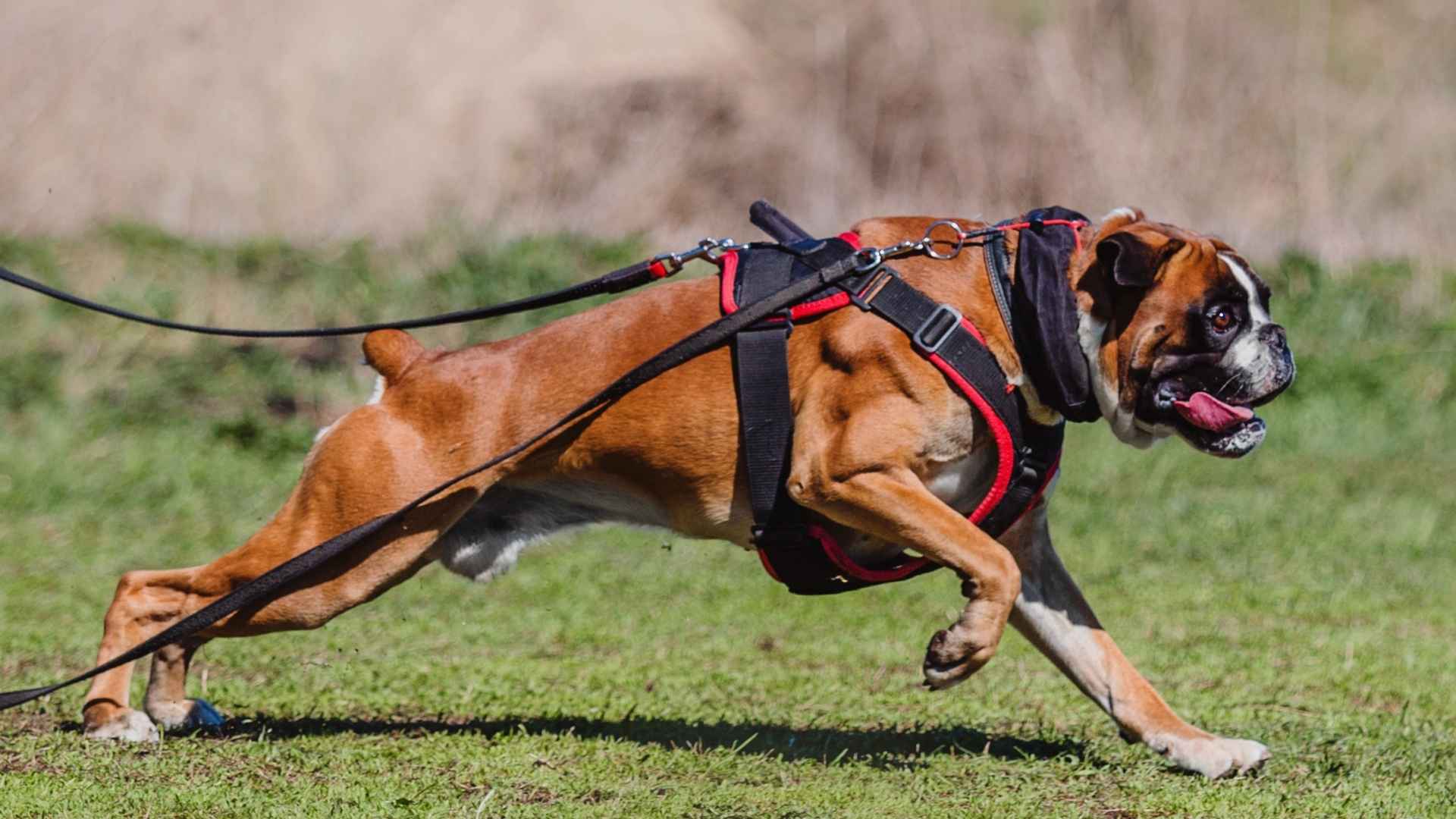These aren’t your average tug-of-war champions. We’re talking about dogs that can pull carts, sleds, and maybe even your overly dramatic sibling out of bed.
Throughout history, humans have selectively bred working dogs to tackle tough tasks like hunting, herding, farming, and more. The best weight-pulling dog breeds are more than just strong—they’re determined, driven, and downright impressive when it comes to moving serious weight.
Think canine powerlifters with a heart of gold. Some of them possess such impressive power that it might just catch you off guard. But don’t be fooled by the muscle—they’re often gentle giants, incredibly loyal, and love being part of a team (especially when that team includes snacks at the end of the job).
Whether you’re into dog sports, outdoor adventures, or just want a pup that can carry their own weight (literally), these breeds bring strength and spirit to the table. So leash up and hold on—because these dogs were born to pull, and they do it with pride.
Best Weight-Pulling Dog Breeds
1. Rottweiler
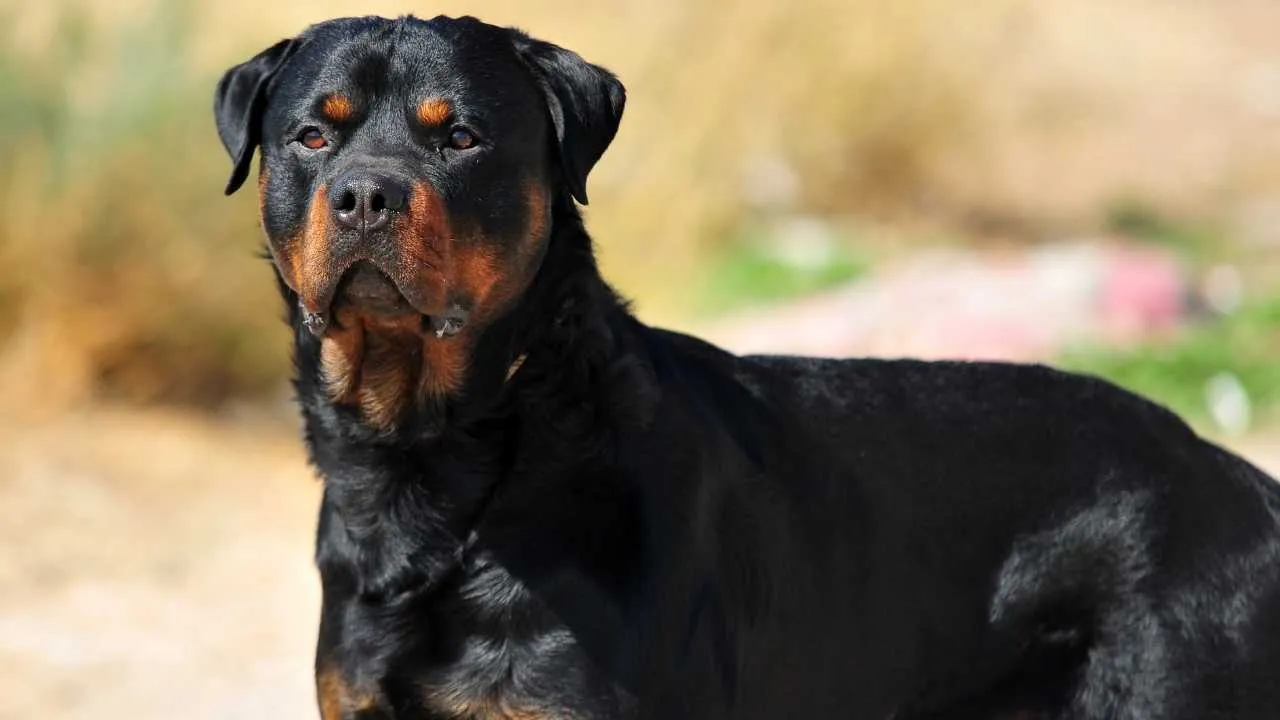
Rottweilers didn’t get their reputation for strength by accident. Originally, they were the all-in-one heavy lifters of the dog world—herding livestock, pulling hefty carts loaded with goods, and standing guard with a no-nonsense attitude. If you needed a canine that could haul a load and protect your home, the Rottweiler was your go-to.
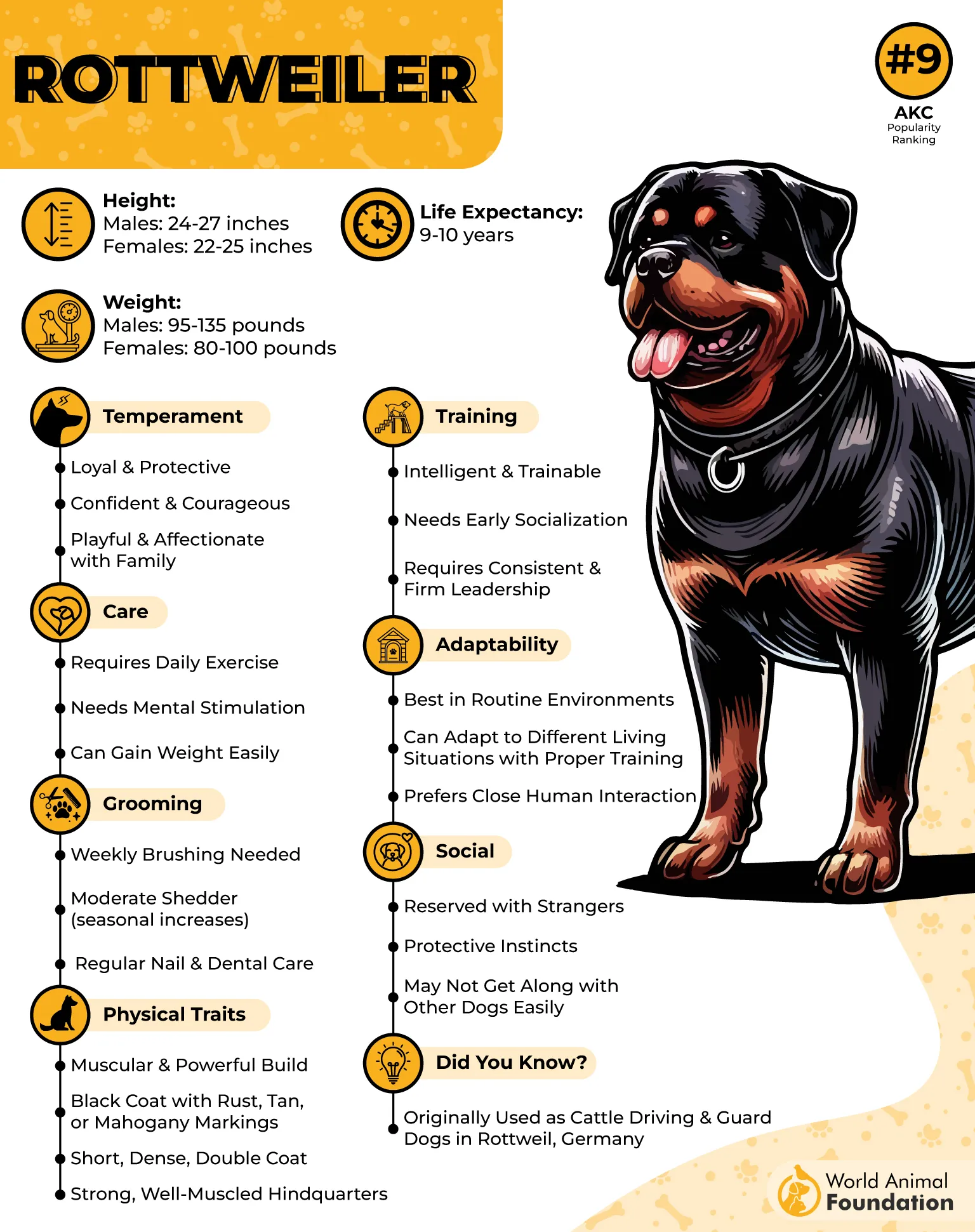
Rottweilers have long been favored as working dogs, police dogs, and family guardians. Despite their tough exterior, Rottweilers are deeply affectionate and devoted to their families.
Because of their natural guarding instincts, Rottweilers make excellent watchdogs but need owners who are firm, consistent, and experienced in handling strong-willed breeds.
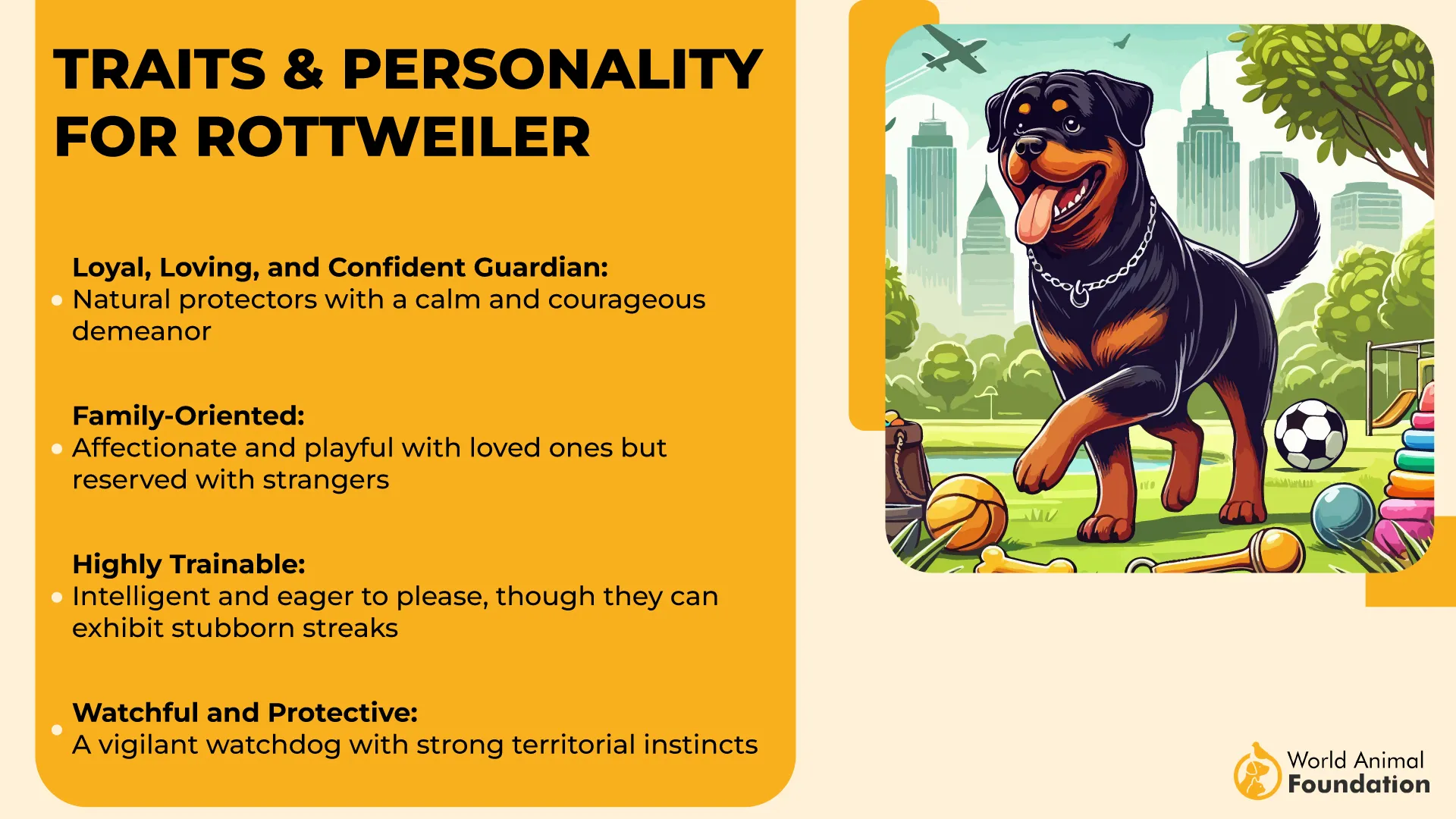
Why Rottweilers Rock:
Built for hard work: from herding to hauling heavy carts
Massive strength packed into a surprisingly agile frame
Fiercely protective but unbelievably devoted to their people
Built like a compact tank with muscles for days, these dogs combine raw power with surprising intelligence and loyalty. They’ll pull their weight—and then some—and they do it all while keeping a watchful eye on their family.
They thrive with proper training and socialization from an early age, as they are highly intelligent and eager to please, but can be protective if not guided well.
Fun Fact: Rottweilers are basically the canine version of a Swiss Army knife—strong, smart, and ready for anything.
2. Great Dane

Nicknamed the “Apollo of Dogs,” the Great Dane is one of the tallest dog breeds in the world. Originating from Germany, they were initially bred to hunt wild boars and guard estates, but today they’re best known as affectionate family companions.
Great Danes were the heavyweight champs of the hunting world—strong, brave, and unstoppable. Their job? Pin down their prey until the hunter caught up, kind of like a furry, muscle-bound bodyguard.
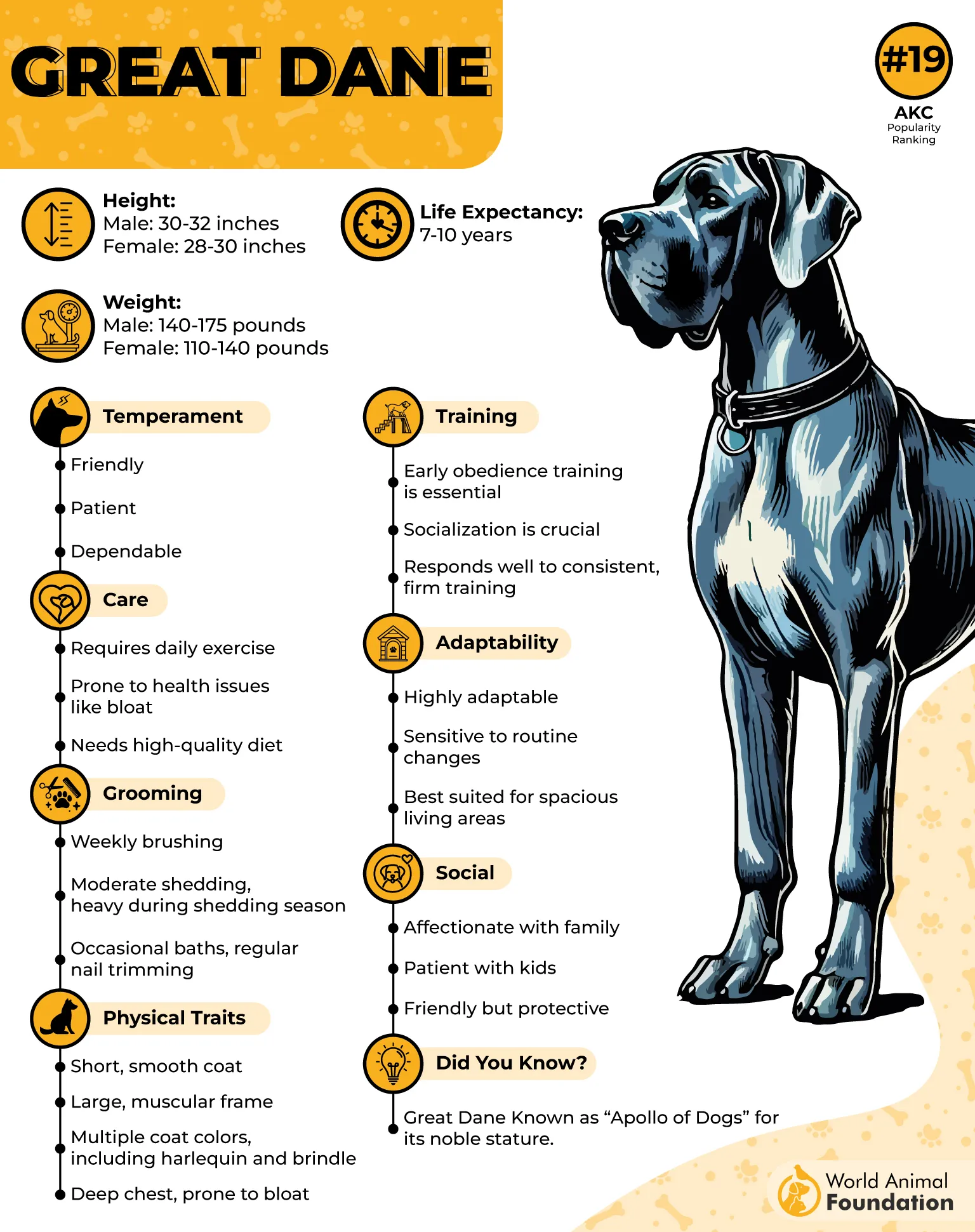
But as time went on, these mighty dogs swapped their boar-busting jobs for a more relaxed role as loyal family protectors and couch companions. Breeders dialed down the wild side and dialed up the love, turning them into the lovable, gentle giants we adore today.
Why They’re Impressive:
Massive size with surprising grace (they don’t just walk—they glide)
Raw strength that once tackled wild boars with ease
Heart-melting sweetness that makes them the world’s biggest lap dogs
Great Danes are friendly and gentle with children, often referred to as “gentle giants.” They love human company and can be quite sensitive. Their size might intimidate intruders, but they are more likely to greet you with a tail wag than a growl.
PetMD notes that Great Danes are moderately playful and need plenty of space to move around and stay active. To meet their exercise needs, plan on taking them for long walks at least twice a day.
Fun Fact: Despite their size, Great Danes believe they’re lap dogs. Don’t try to argue—they’ll just plop down and prove you wrong.
3. Siberian Husky
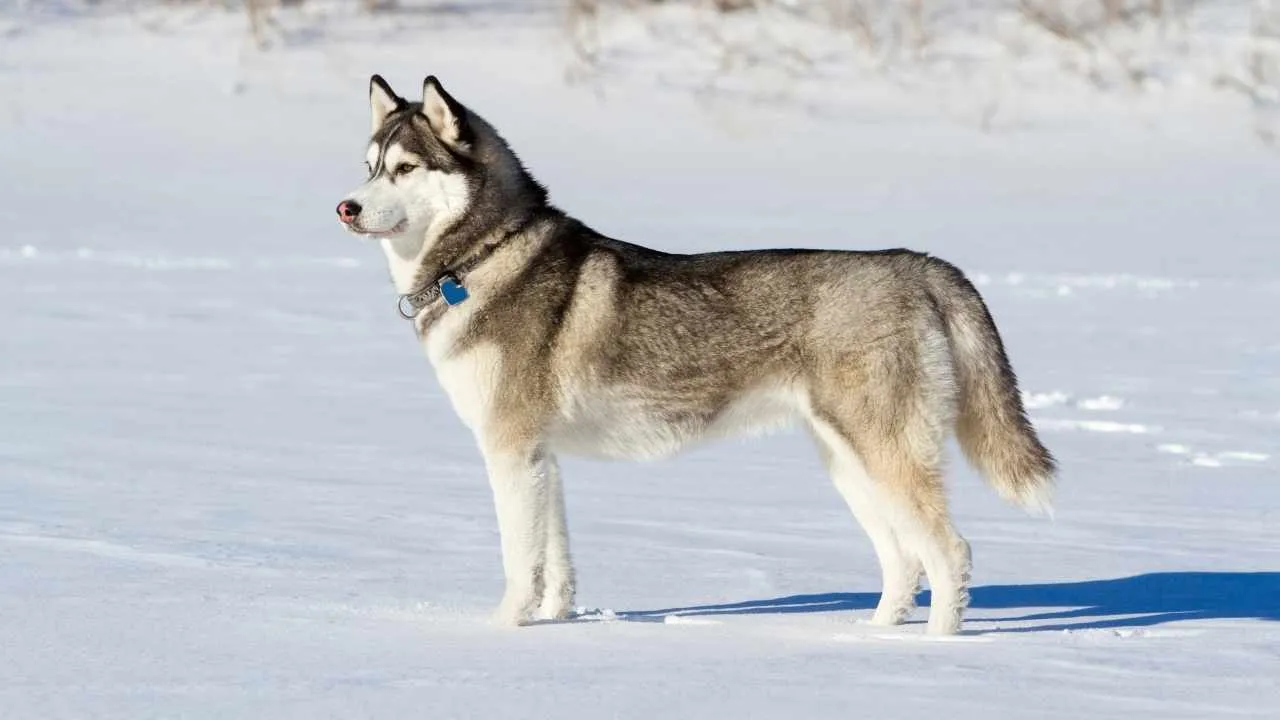
The Siberian Husky was bred by the Chukchi people of Siberia to pull sleds across icy terrain. Known for their endurance and wolf-like looks, Huskies are independent, energetic, and famously vocal.
Siberian Huskies don’t just look like they belong in a snow globe—they’ve got the strength and stamina to prove it. Males usually stand 21 to 23.5 inches tall and weigh 45 to 60 pounds, while females are 20 to 22 inches and 35 to 50 pounds.
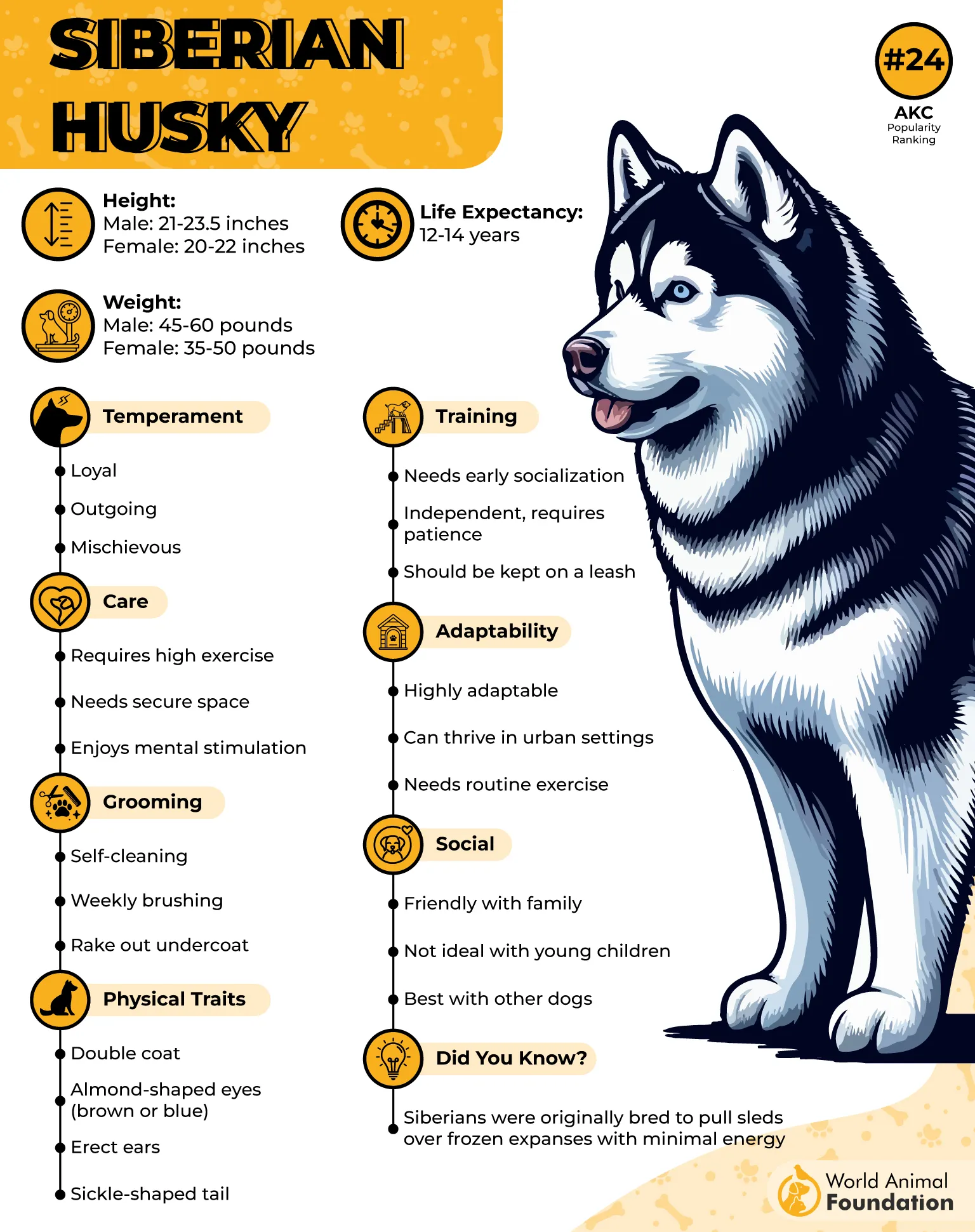
How did they get so strong? Nature and nurture! Huskies are built with dense muscles, tough paws, and a relentless spirit. They’re basically the marathon runners of the dog world, built to endure cold, long-distance hauls while looking adorable and howling at the moon.
Why They’re Arctic Powerhouses:
Compact but mighty muscles are made for pulling and running
Incredible endurance to keep going mile after mile
Social and energetic pack animals who thrive on teamwork
Huskies are friendly and outgoing, but not ideal as guard dogs—they’re more likely to make friends with strangers. Their high energy and independent streak mean they need plenty of exercise and mental stimulation. Escape artists by nature, they’re not suited for lazy owners or unsecured yards.
Fun Fact: Huskies have a double coat so insulating, they can handle sub-zero temps without even shivering. Meanwhile, humans are bundled up like snowmen.
4. German Shepherd
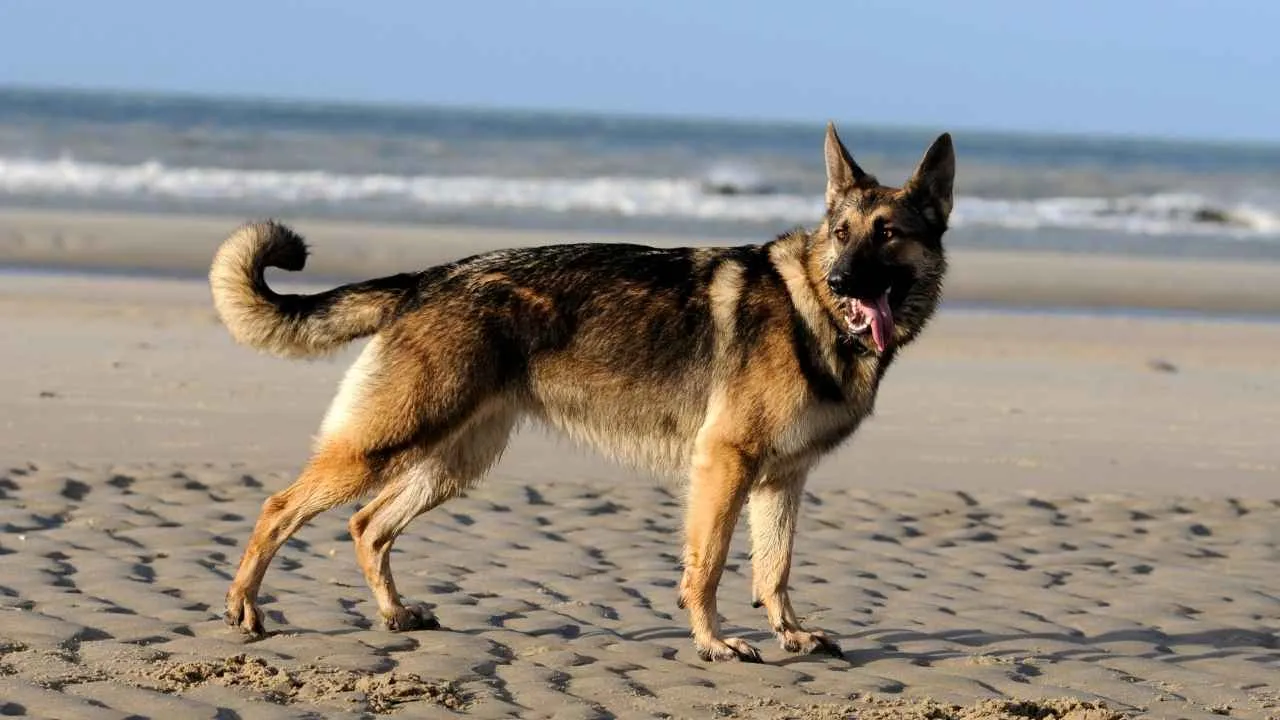
The German Shepherd is one of the most versatile and respected dog breeds worldwide. Originally bred in Germany for herding sheep, they now serve as police dogs, service animals, and loyal family pets.
German Shepherds didn’t mess around when they showed up on the scene—they were bred for hard work, herding sheep by day and hunting by night. With muscles that could power a small tank and a brain that rivals a detective, these dogs are the ultimate multitaskers.
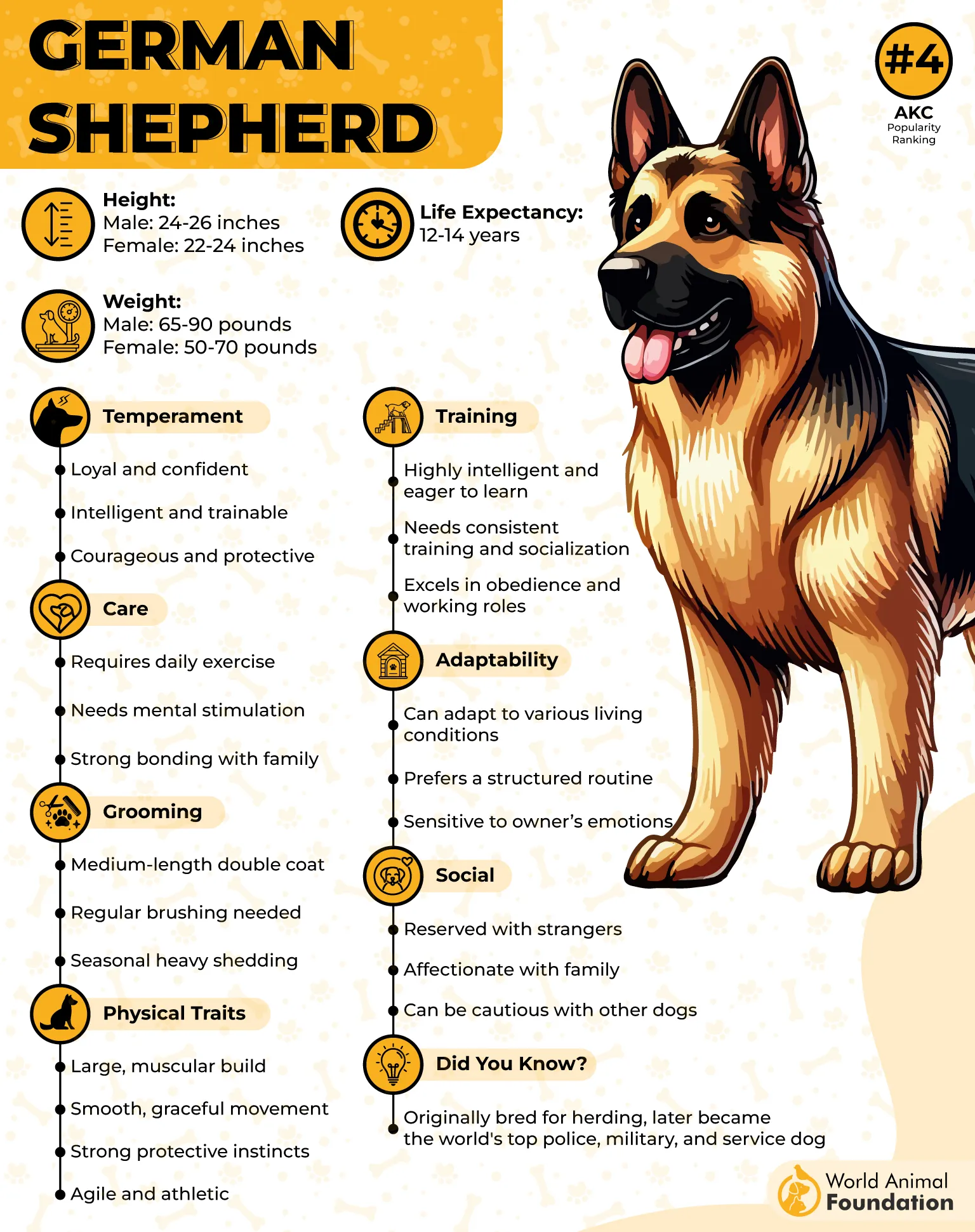
Their strength isn’t just physical—it’s mental too. Put simply, German Shepherds bring the power and the smarts to any pack. Known for their intelligence, loyalty, and courage, German Shepherds are quick learners and eager to work.
Why They’re Strong & Smart:
Athletic build made for speed, strength, and stamina
Top-tier intelligence makes training a breeze
Unmatched loyalty means they’ll protect their people no matter what
They’re protective without being overly aggressive and form deep bonds with their family. One notable trait of German Shepherds is their loud bark, but with proper socialization, their tendency to be overly vocal can be managed, as noted by Petplan. Early socialization and training are key to managing their guarding instincts.
Fun Fact: German Shepherds learn new commands so fast, they probably have a secret doggy university somewhere.
5. Bulldog
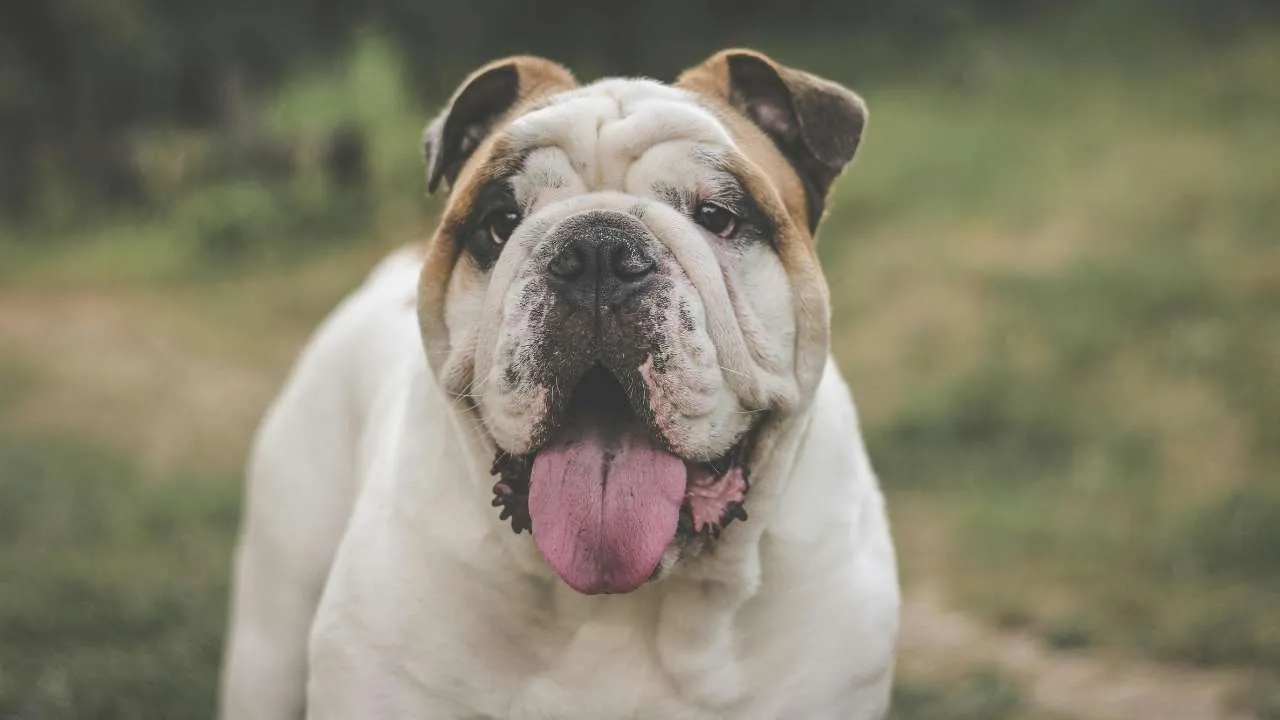
The Bulldog is a true classic: unmistakable with its stocky build, wrinkled face, and signature underbite. Originally bred in England, these tough guys come from a rough-and-tumble history as bull-baiting fighters in 13th-century England (a brutal sport where they took on bulls way bigger than themselves).
Today’s Bulldogs are far removed from their rough past. Modern Bulldogs are gentle, affectionate, and famously easygoing, making them one of the most beloved family pets in the world.
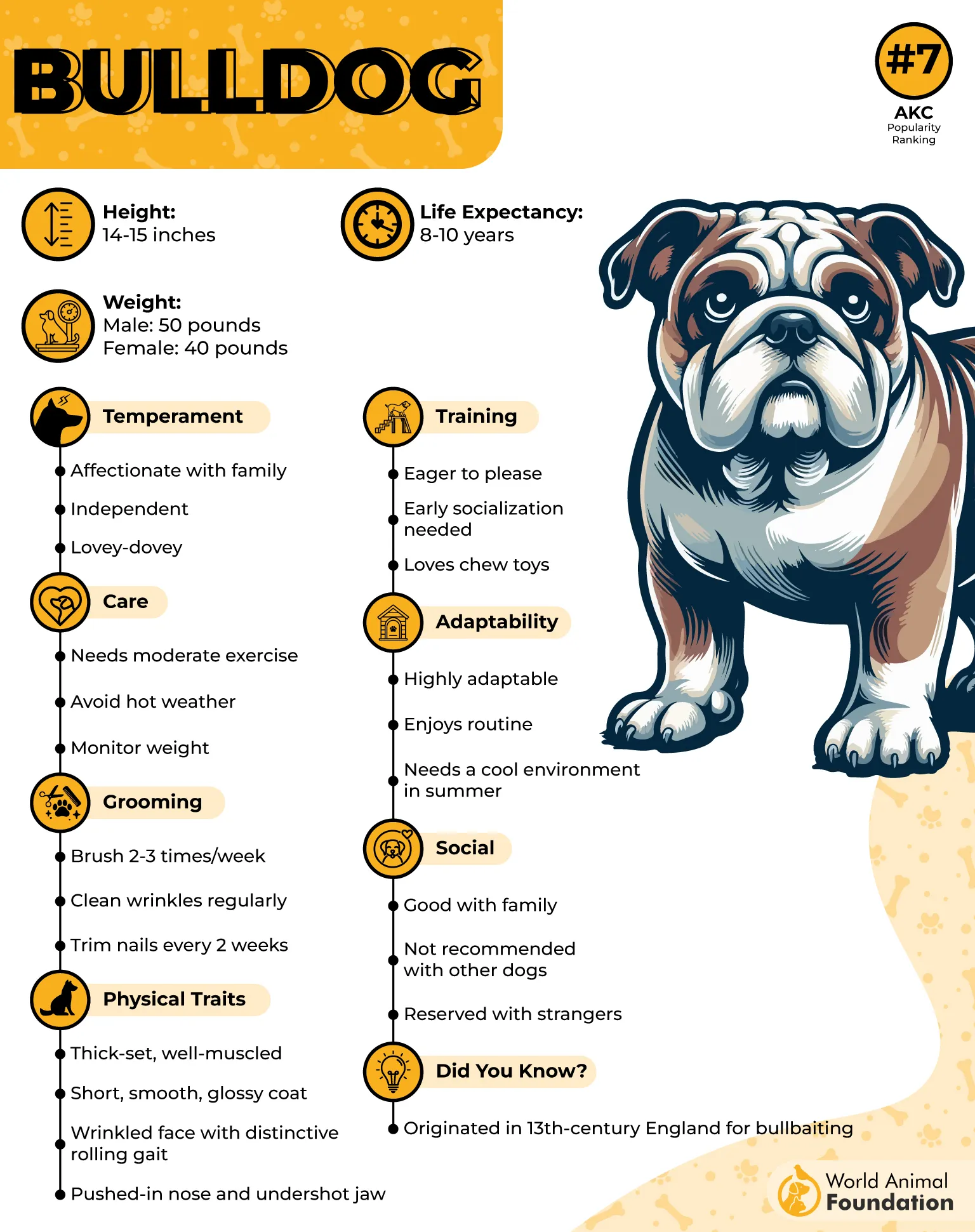
Despite their grumpy expression, Bulldogs are loving, calm, and great with children. They’re known for being loyal companions who adore lounging on the couch more than running laps.

Bulldogs aren’t particularly energetic, but they’re very affectionate and form strong bonds with their people. They’re also generally good with other pets.
Why Bulldogs Pack a Punch:
Stocky, muscular bodies built for serious strength
Fearless attitude that belies their compact size
A legendary “grip” that would make a pitbull jealous (don’t try pulling on their favorite toy!)
Bulldogs are great for apartment living due to their low exercise needs and quiet nature. However, they’re sensitive to heat and humidity because of their flat faces, so they need cool environments and shouldn’t be over-exercised in warm weather. Their facial wrinkles also need regular cleaning to prevent skin infections.
Fun Fact: Bulldogs are the national symbol of Britain, often used to represent determination and tenacity, especially during World War II.
6. Saint Bernard
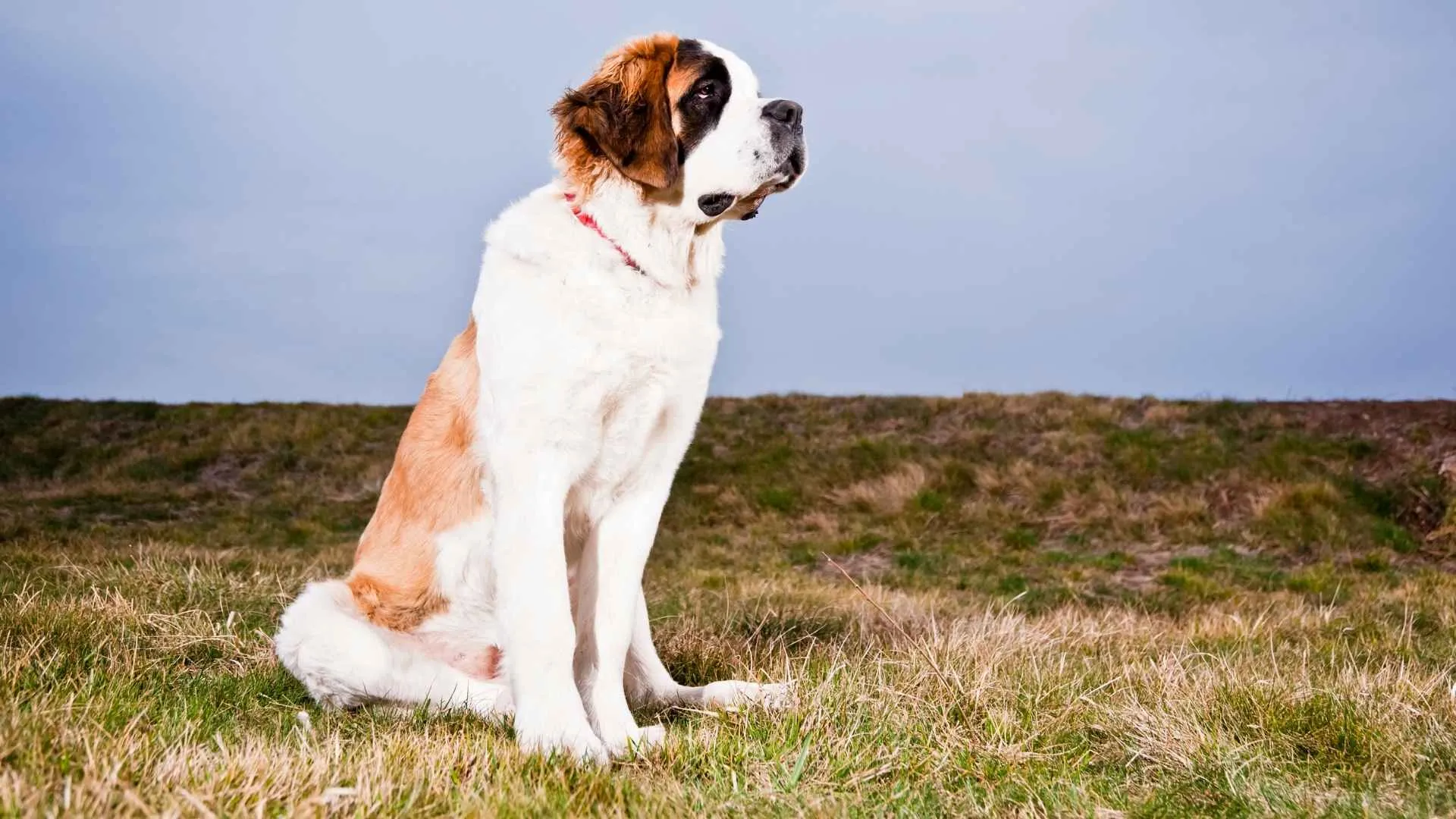
The Saint Bernard is one of the most iconic gentle giants in the dog world. Originally bred by monks in the Swiss Alps to rescue stranded travelers from snowstorms, this fluffy breed combines massive strength with a deeply loving and patient temperament.
Nowadays, Saint Bernards are less about hauling people out of avalanches and more about hauling themselves onto your couch for some serious snuggle time. Saint Bernards are giants, both in size and spirit.
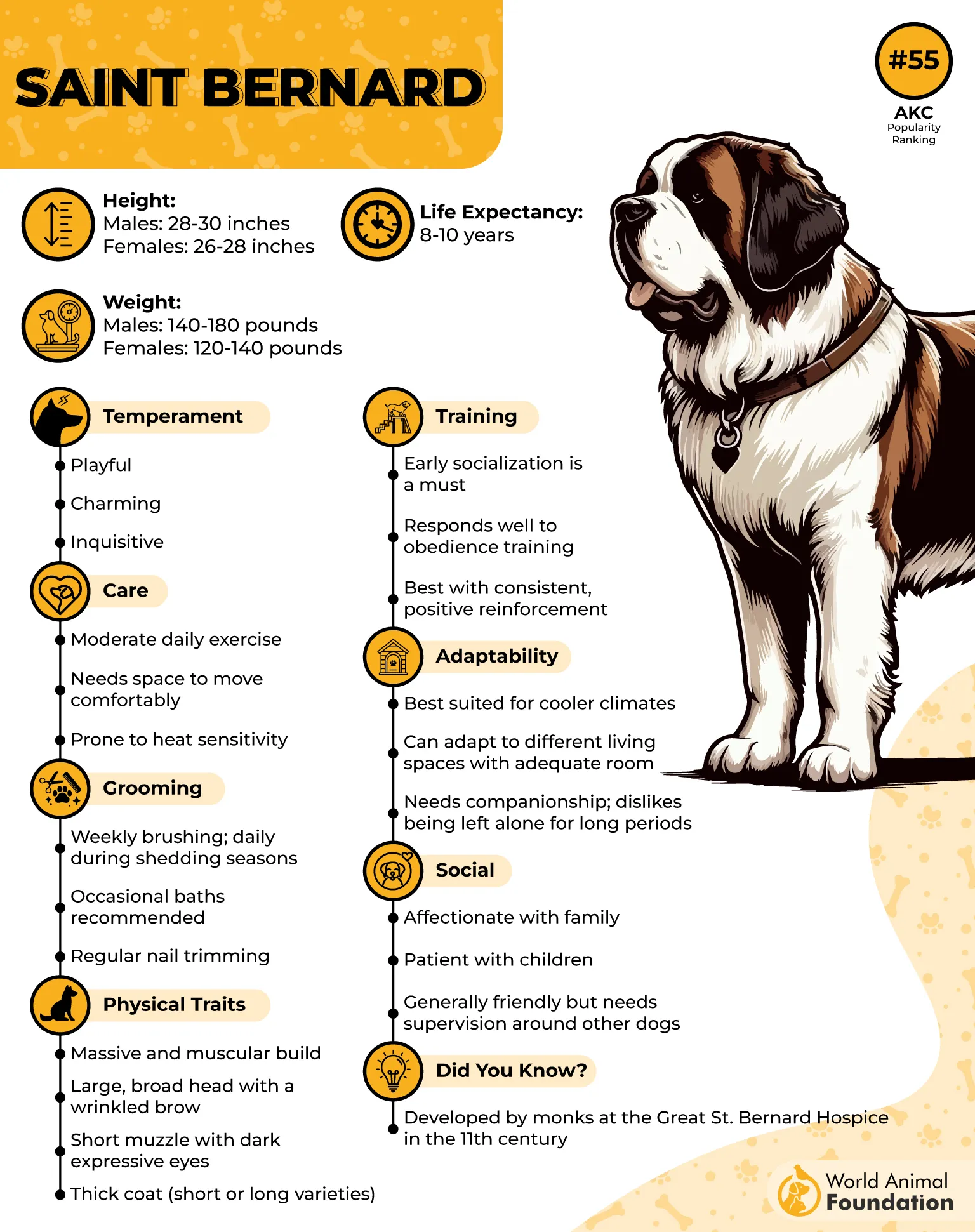
Loyal and affectionate with a dash of protective instinct, they’re the ultimate gentle giants who’ll guard your heart (and maybe your snacks).
Their nickname, “nanny dog,” is well earned. They are calm in the house, not prone to excessive barking, and incredibly loyal to their families. However, they’re not ideal guard dogs—they’re more likely to welcome a stranger than confront one.
Why They’re So Strong:
Built like a cozy tank—solid muscle under all that fluff
Legendary stamina from centuries of mountain rescues
Fierce loyalty means they’ll move mountains (or at least the mailman) for you
Due to their size, Saint Bernards do best in homes with ample space and a cooler climate. They require daily walks but aren’t overly energetic—they’d rather lounge by your feet than go for a run.
Training and early socialization are important, especially while they’re puppies, because they grow fast and can easily knock things (or people!) over without meaning to.
Fun Fact: Saint Bernards historically carried tiny barrels of brandy around their necks—because even mountain rescuers appreciate a little “spirit”!
7. Alaskan Malamute
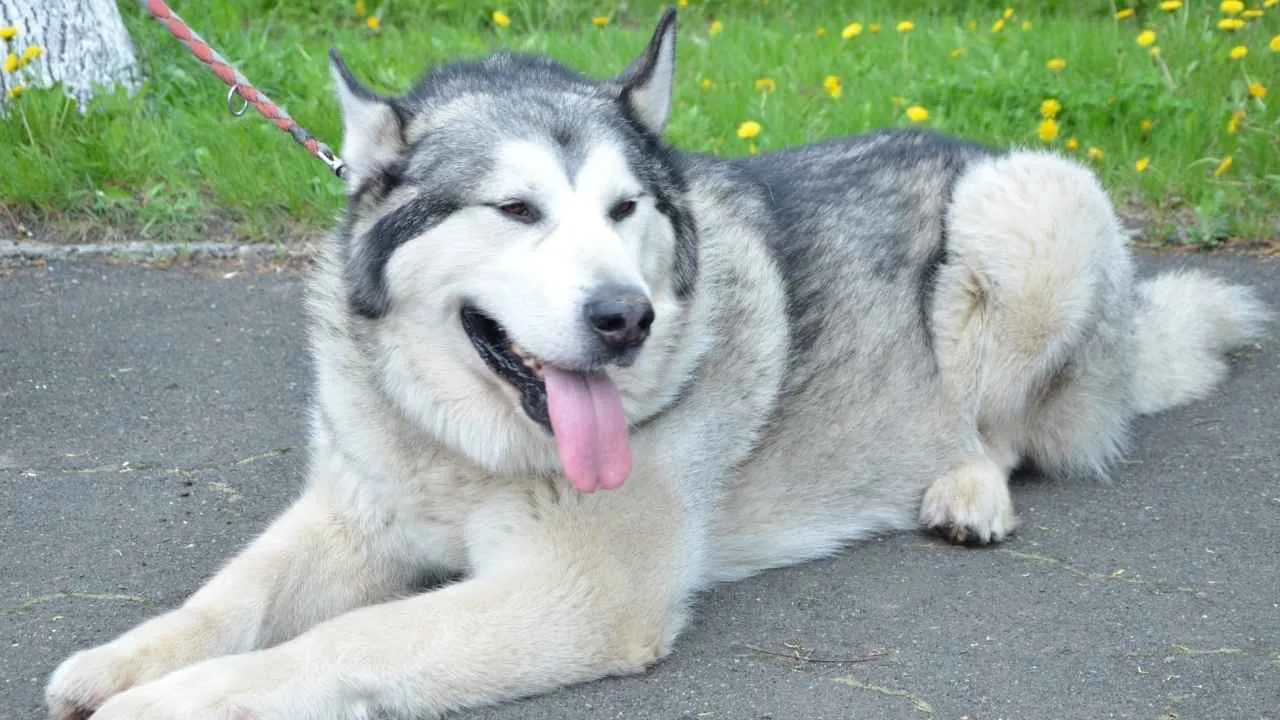
The Alaskan Malamute is one of the oldest Arctic sled dog breeds, originally bred by the native Mahlemut people to haul heavy loads across frozen landscapes. These dogs are strong, dignified, and have a wolf-like appearance that turns heads.
These powerhouse pups have the strength and endurance of a small, furry tractor. And yes, they once hunted big game like polar bears and seals—so they definitely don’t mess around.
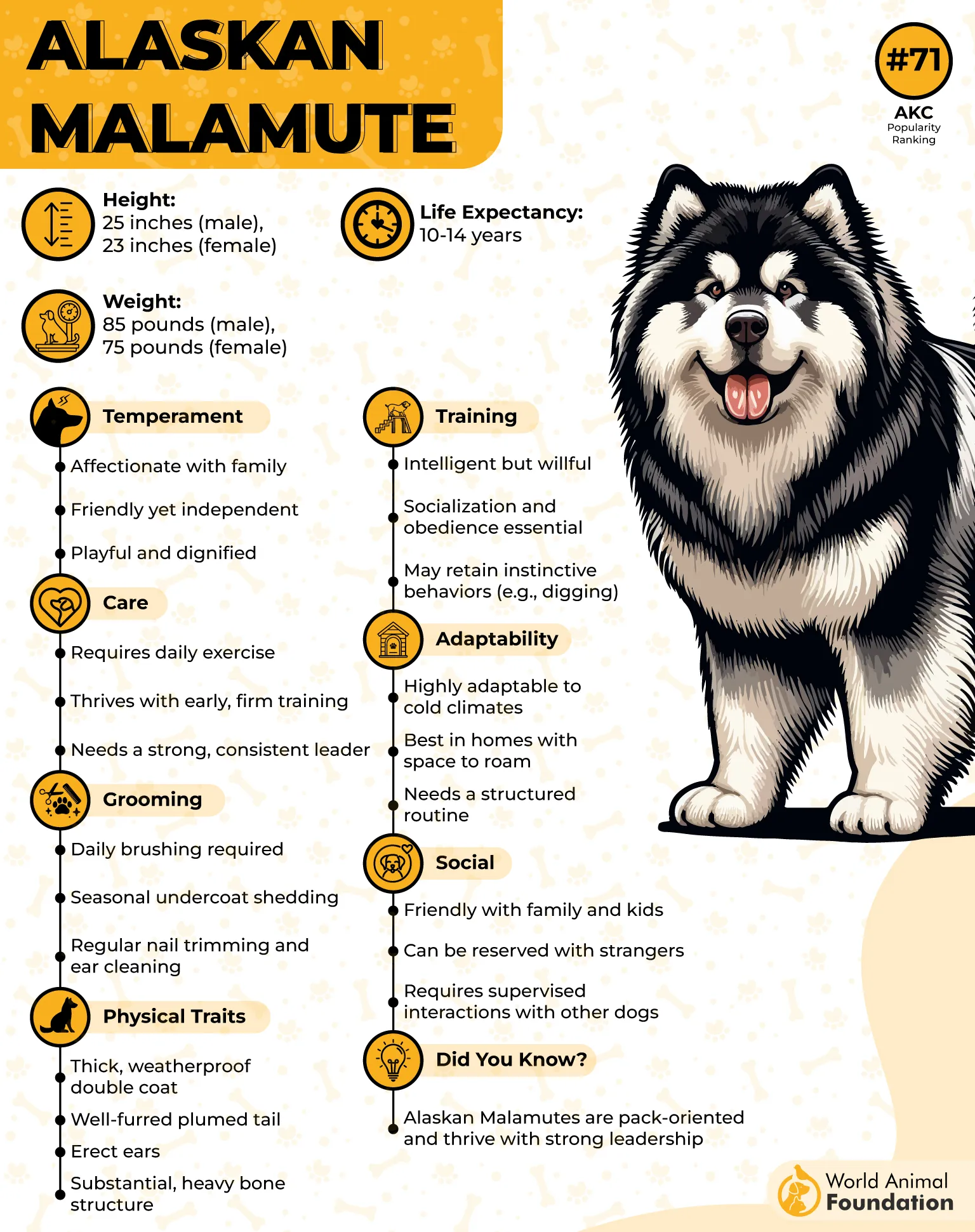
Despite their rugged past, today’s Malamutes are loving family members with goofy grins and big hearts. They’re not wolf hybrids, just big, fluffy goofballs who want to haul you to the couch and chill.
Why They’re Arctic-Strong:
Massive muscles are perfect for dragging heavy loads through snow and ice
Endurance built for miles and miles of rugged terrain
Loyal and affectionate with a playful, sometimes stubborn streak
Malamutes are friendly, affectionate, and great with families—but they are also independent and strong-willed. As per Britannica, this breed may show aggression toward unfamiliar dogs. With proper training, it can serve as a decent watchdog, though it usually doesn’t excel as a protection dog.
They love people, but due to their pack instincts, they can become bored and destructive if left alone. They’re not ideal for novice owners, as they need consistent training, plenty of exercise, and a cool climate to thrive.
Fun Fact: Malamutes have a special howl that’s been known to wake up the entire neighborhood—Arctic party animals, anyone?
8. Doberman Pinscher
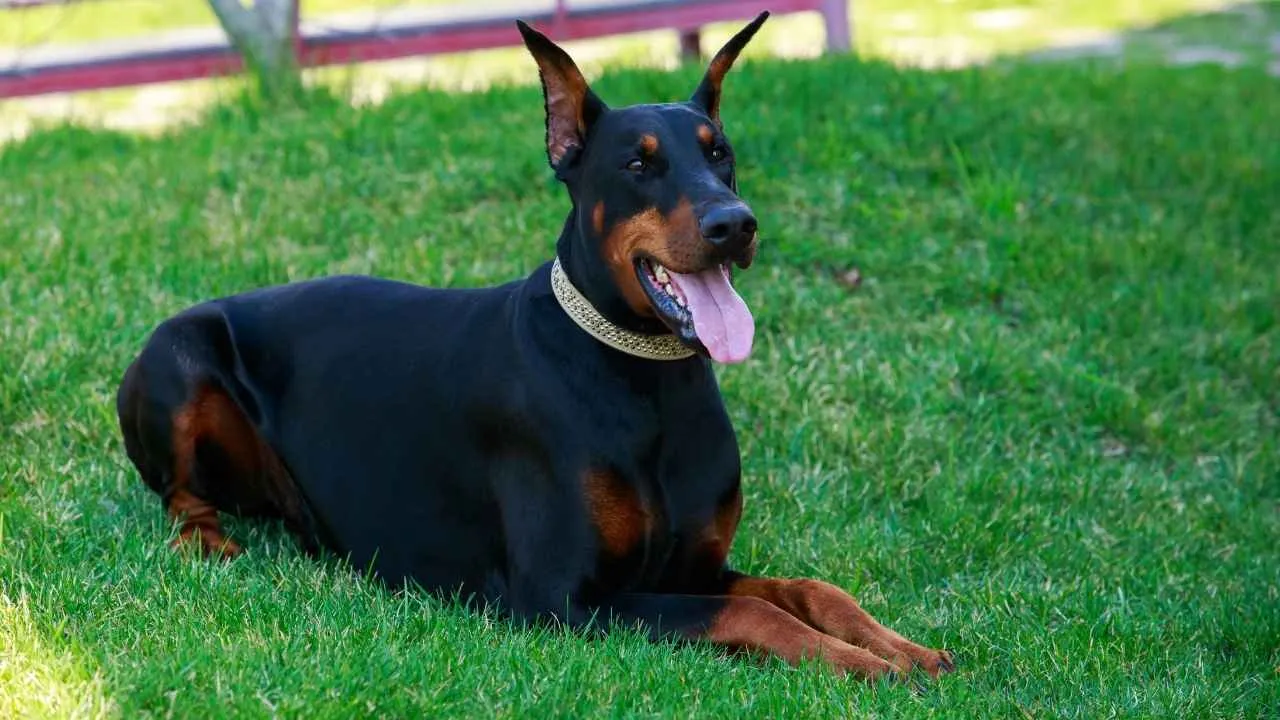
Dobermans are the perfect blend of sleek speed and raw power. The Doberman Pinscher is sleek, powerful, and intelligent—a breed originally developed in Germany by a tax collector who wanted a loyal and protective companion.
Today, Dobermans are known worldwide for their alertness, loyalty, and incredible trainability. Dobermans are medium to large dogs with a sleek, athletic build.
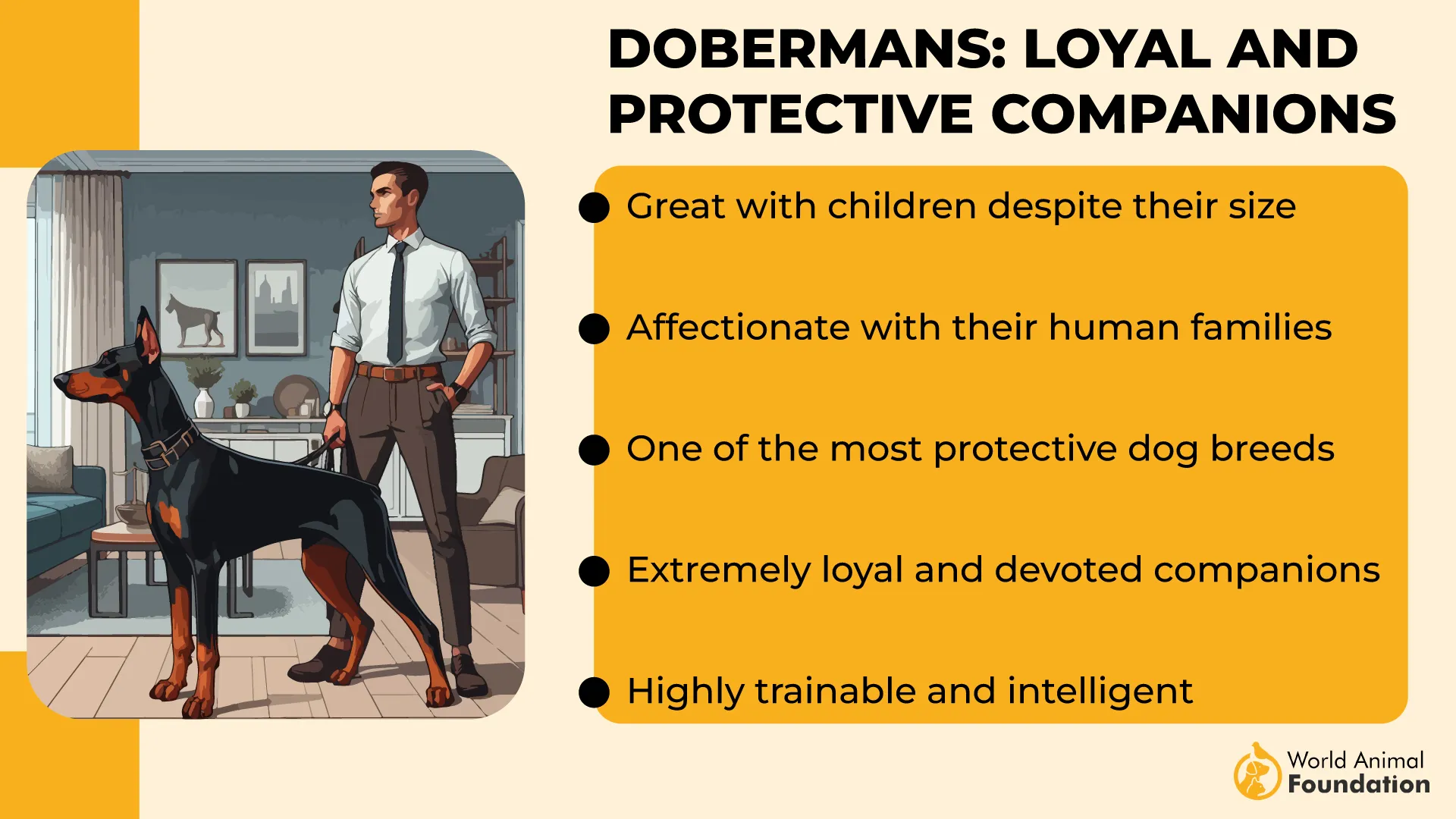
Their short, shiny coat comes in black, blue, red, or fawn with rust markings. They have a regal posture, long muzzle, and often cropped ears and docked tails (though this varies by country).
These dogs are built like a well-tuned machine—fast, strong, and razor-sharp. Their muscles ripple under that smooth coat, and their determination makes them excellent weight-pulling contenders.
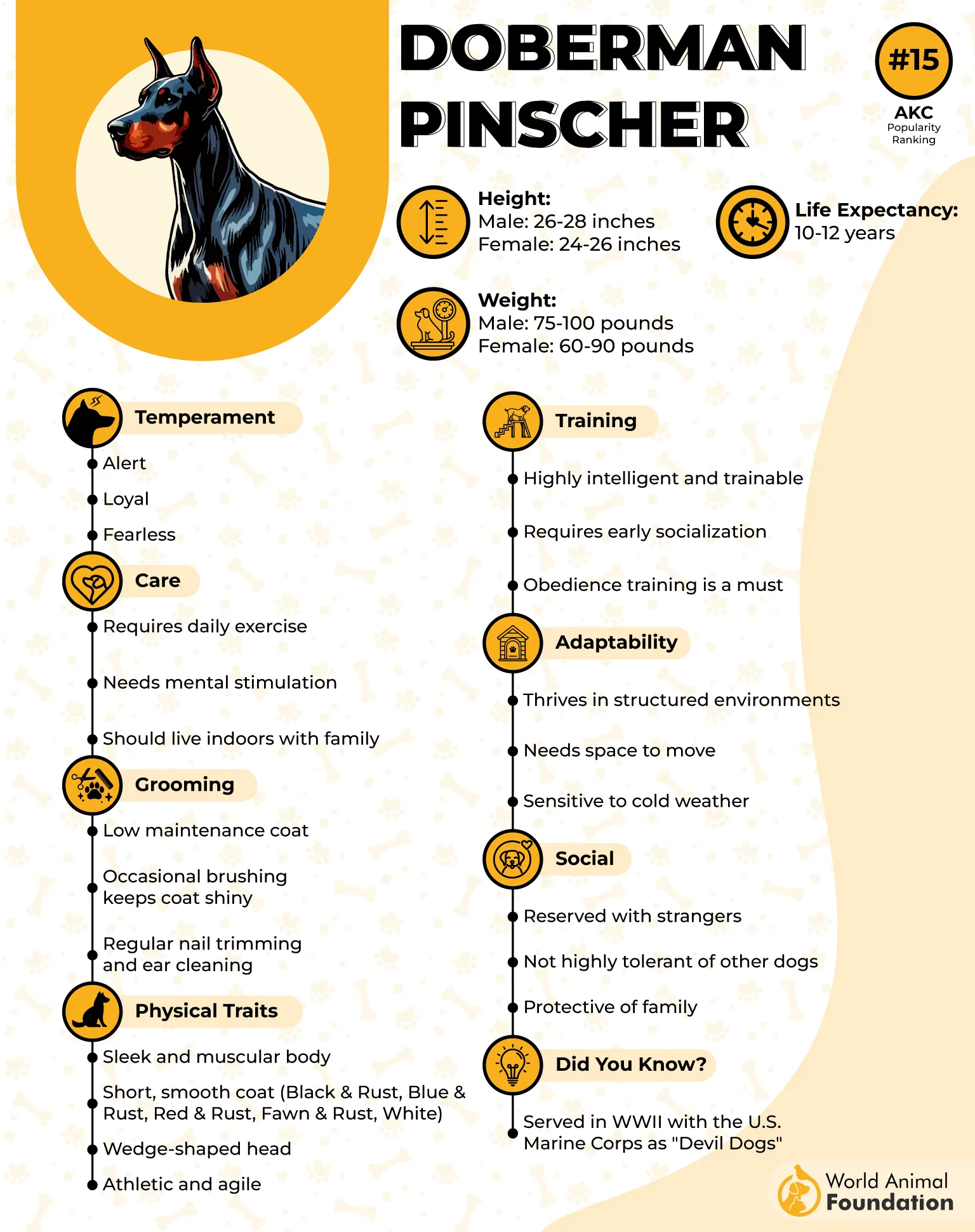
Why Dobermans Dominate Weight-Pulling:
Compact but explosive strength—power in a streamlined package
High drive and stamina keep them pulling longer and harder
Laser focus that makes training and teamwork a breeze
Naturally protective, they pull not just for sport but to guard their pack
They’re natural protectors, often bonding closely with one person. Despite their intimidating look, they’re gentle and loving with family and can be playful, even goofy. Proper socialization and firm, positive training are essential to bring out the best in them.
Fun Fact: Dobermans can accelerate faster than some Olympic sprinters—imagine that power harnessed in a weight pull!
9. Rhodesian Ridgeback
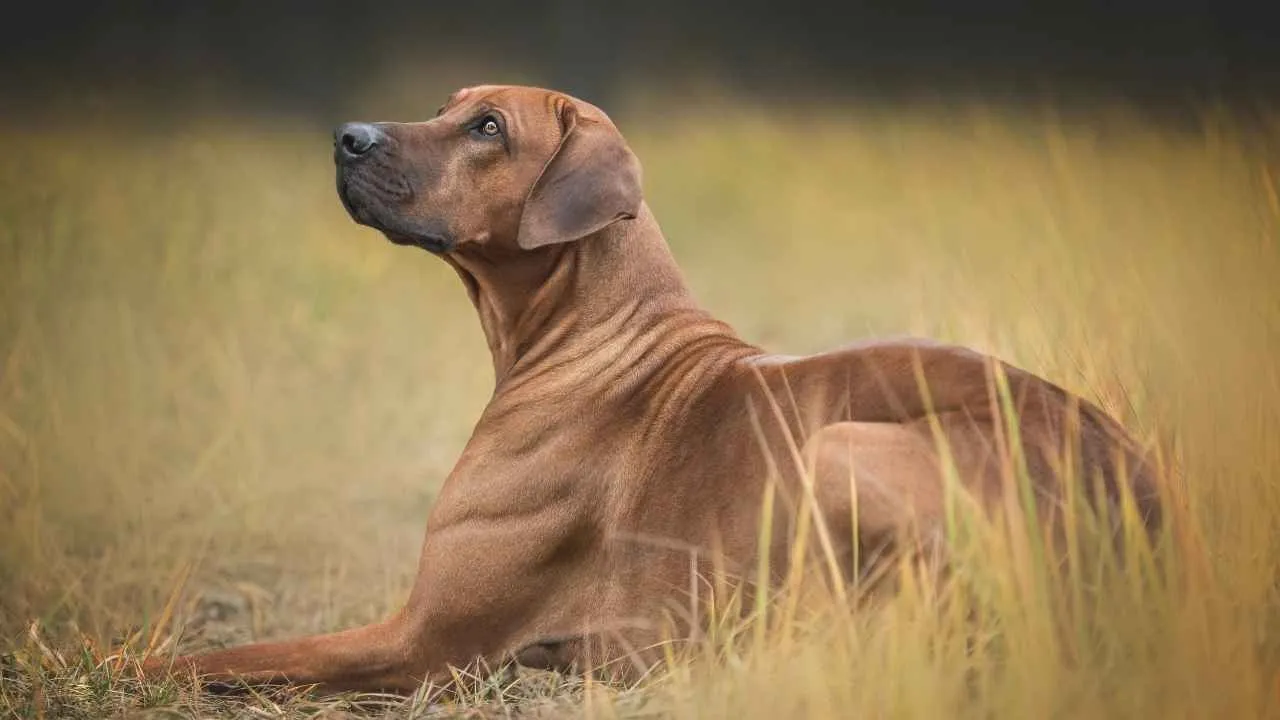
The Rhodesian Ridgeback is a striking and athletic dog breed that hails from Southern Africa. Originally bred by European settlers in Rhodesia (now Zimbabwe) to hunt lions and protect homesteads, this breed is known for its courage, endurance, and loyalty.
Ridgebacks are large and muscular. Their most distinctive feature? The “ridge” of hair running along their back in the opposite direction to the rest of their coat—a natural Mohawk of sorts.
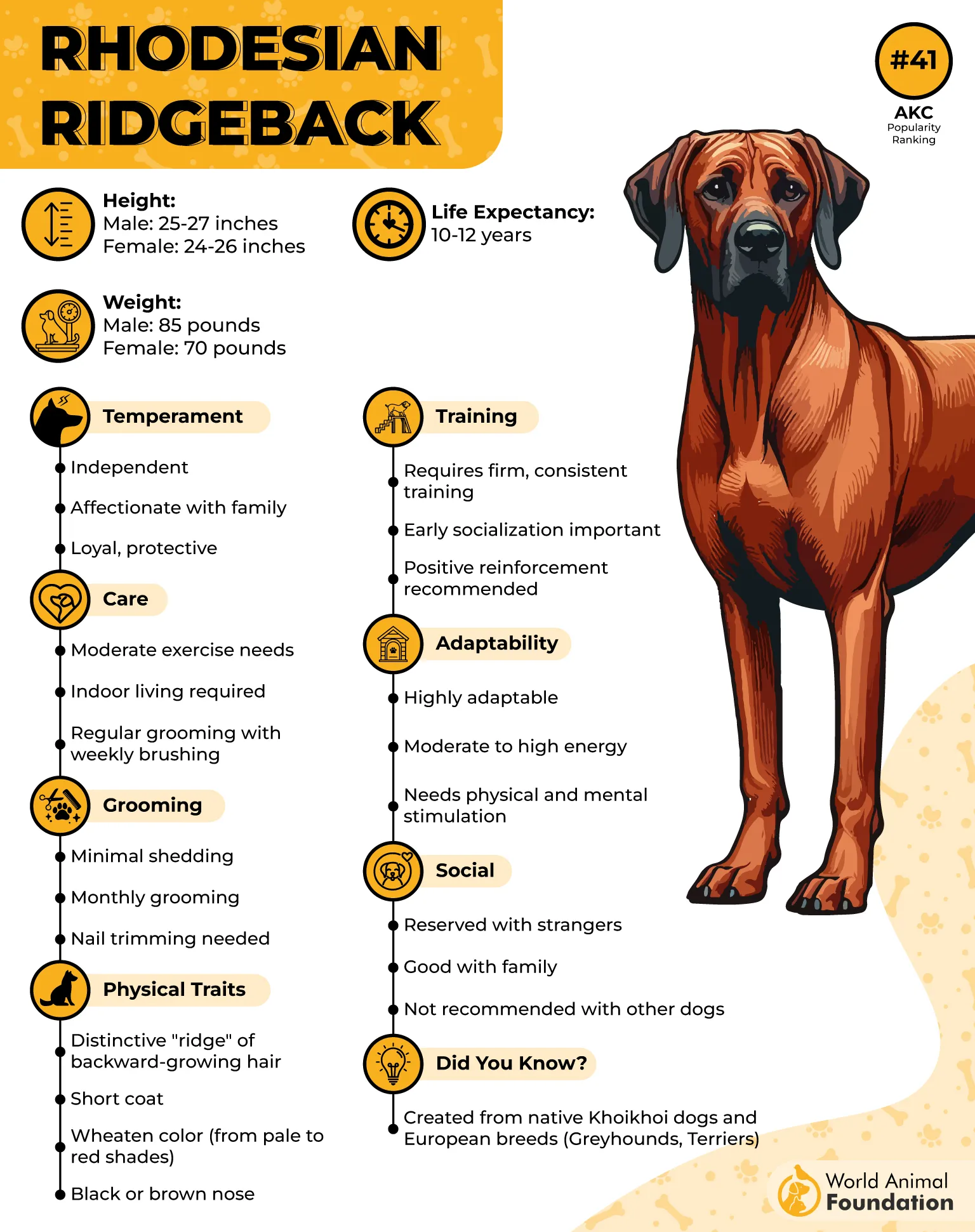
They’re not the flashiest dogs, but they pack serious muscle and stamina, perfect for pulling heavy loads across rough terrain. Though once known for hunting lions, Rhodesian Ridgebacks are gentle giants at home, calm, affectionate, and deeply bonded with their families
Why Ridgebacks Rule Weight-Pulling:
Naturally muscular with incredible endurance for long hauls
Cool and collected—they don’t sweat the small stuff, just the big weights
Adaptable and strong-willed, great for solo or team pulling
Silent workers—no flashy moves, just steady power
They are naturally aloof with strangers, which makes them excellent watchdogs, but they are not aggressive without cause. Ridgebacks are independent thinkers, so consistent training and early socialization are essential. They do best with experienced owners who can provide clear leadership and plenty of exercise.
Fun Fact: Despite their fierce history, Ridgebacks make surprisingly chill couch potatoes—when they’re not pulling their weight, that is!
Conclusion
The best weight-pulling dog breeds combine strength, high endurance, and determination to reach the finish line. Certain breeds like the American Pit Bull Terrier, American Staffordshire Terrier, American Bulldog, American Bully, Bernese Mountain Dogs, and Greater Swiss Mountain Dogs are known for excelling in dog sports that test body weight and power. These dogs often compete in weight classes under strict rules, where many breeds showcase their ability to pull the most weight.
While some may mistake them for human-aggressive dogs, proper training and responsible dog owners make all the difference. Dog pulling isn’t just about muscle—it’s about pushing limits, breaking records, and celebrating the powerful bond between canine and handler in a competition built on trust and teamwork.


